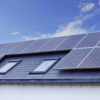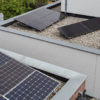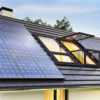The time it takes for a solar power system to pay itself off is easily one of the most important considerations a buyer needs to take into account. It’s also the least understood and most hyped part of any solar installation.
All solar installers and retailers know that their customers expect the quickest payback period so that they can start enjoying free electricity asap.
Unfortunately, this is also why misleading and untrue statements about how long a solar power system will take to pay itself off abound in marketing and sales material alike!
How is Solar Payback Period Correctly Calculated?
The time it takes for a solar power system to recoup its cost is directly proportional to how much it helps you save in electricity bills. The formula for calculating a solar payback period is:
Total cost of your solar power system / Savings per year.
So, let’s say that you live in Melbourne, and opt for a 6.6 kWh, which costs $4,500 after incentives. The system saves you $2,300 per year on your bills. So, your payback period is $4,500 / $2,300, which is roughly 2 years.
Even though it may seem like an easy enough thing to figure out, there are a number of factors that come into play here.
What All Determines Your Solar Payback Period
The reason why a solar power system’s payback period is so confusing is because it really is. There are a myriad of influences that can ultimately shorten or lengthen the time it takes for a system to pay itself off.
Even though the “average” payback period for a solar power system in Australia is around 4 years, your system may either take more or less time. The time it takes for a solar power system to break even depends largely on:
The size of your solar power system
While it may seem that larger systems, due to their cost, will take longer to pay themselves off, it’s the smaller ones that need more time.
A small sized solar system, say 2.5 kWh will result in lesser savings every year, and you need to take account of increasing electricity prices, so will take more time to break even. Larger systems on the other hand result in greater savings and thus become profitable quicker.
Your annual electricity bill
If you’re already energy conscious and/or are not spending a lot on power, then you can expect a quicker break-even period, although not necessarily so. Savings ultimately depend on how much electricity consumption your solar power system offsets.
So, less electricity consumption paired with a large solar power system will result in faster break-even and vice-versa. Even so, we contend that no matter what your electricity bill is, there’s always room for improvement.
Feed-in-Tariffs (FiTs) in your state
FiT is the rate at which your utility purchases electricity from your solar power system when you load it to the grid. FiTs are also called the buyback rate and vary from state to state and utility to utility.
FiTs have a large say in how long it takes for your solar power system to pay itself off since a high rate can help you recoup your investment faster. These tariffs also have peak hours which fetch the highest rates, and off-peak hours with minimal prices.
Total hours of sunshine in your area
The average annual sunshine in an area ultimately dictates how productive solar power systems will be. Fortunately, most of Australia gets a decent amount of sunshine throughout the year. However, you must be cautious with anyone suggesting unrealistic hours of sunshine and overly optimistic credits in your utility bill, err on the side of caution.
Perth is the sunniest with the city getting 3,200 hours of sunshine while Melbourne gets the least amount of sun at 2,200 hours of sunlight. You can find out how much sunlight your area receives from this page.
More sunny hours simply mean your solar power system will produce more power. But, this isn’t to say that places that don’t get enough sunlight are at a disadvantage.
You can always make up for a lack of light by investing in more panels. Doing so will increase the cost of your system and may require longer to break-even.
A good solar designer will also take how much sunlight your roof receives before designing your solar power system.
We Can Help You Figure This Out
Even though your solar installer will give you as accurate a picture of how long your solar panels will take to repay itself, it’s best you educate yourself on how these figures are arrived at.
But, helping you get the best data possible is what bidmysolar™ is here for. As Australia’s premier solar search engine, we specialize in advanced system designs that ensure as fast a return on your investment as possible.
We’re with you every step of the way, from finding the right installer, to designing a solar power system unique to your requirements and ensuring the installation process goes as smoothly as possible.
Learn more about how we work, or contact us for more information.





